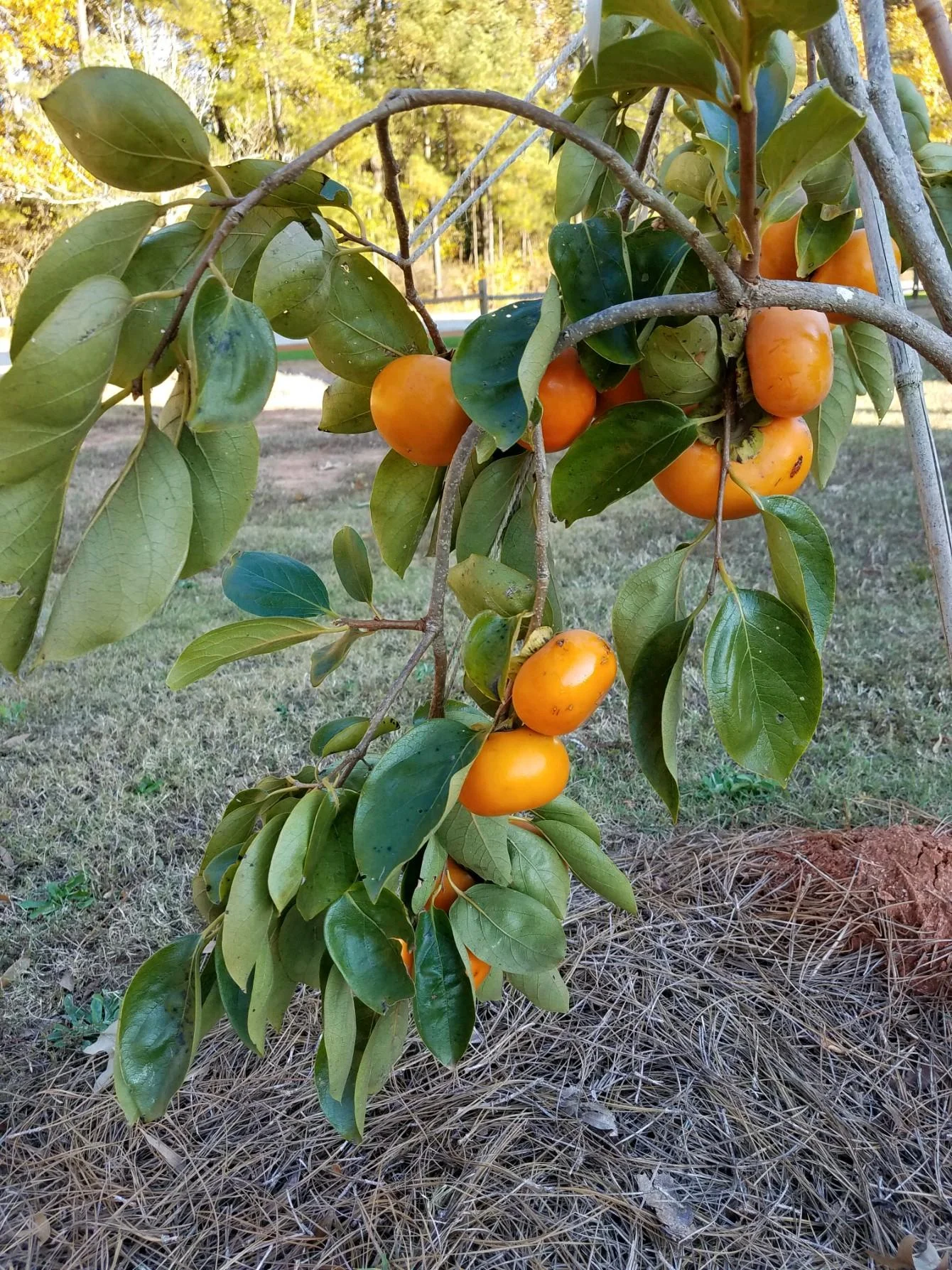Persimmons are divided into two groups. Common persimmon, Diospyros virginiana, is a deciduous tree that is found in the southeastern quadrant of the US. It has quarter-sized fruits (actually a giant berry). Most have numerous seeds but some cultivars, like ‘John Rick’ and ‘Early Golden’ have only a few. The fruits lose their astringency with maturity. Most of the ones I ate as a child were picked off the ground, where they fell as they reached soft, sweet ripeness.
Diospyros kaki, the Oriental Persimmon, offers flattened fruit about the size of a tangerine and few to no seeds. The best cultivar for homeowners is ‘Fuyu’ because it is not astringent even when incompletely ripe. You may also find ‘Hachiya’ trees in your local nursery. Hachiya fruit is slightly pointed, like a large acorn, and should be eaten only when completely ripe. The Oriental species is less cold-tolerant than the common native.
Persimmons are a health food, packed with vitamins A and C, loads of antioxidants and plenty of fiber. They are favorite snacks of our opossums.
Trees can reach up to 40 feet in height. The natives are dioecious, which means there must be both a male and a female tree to produce fruit. Many of the Oriental cultivars are self-fruitful. Natives and Orientals will not cross pollinate.
Persimmon wood is strong and was once used for golf clubs and pool cues. The distinctive bark pattern of a mature tree makes it easy to identify. Autumn leaf color varies from yellow to purple, depending upon the variety and the location grown. Northern trees tend toward yellow fall color, while southern trees may be more purple. The natives lose their leaves early in the fall, so it is not unusual to see a leafless tree, naked branches decorated with fruit.
The accompanying photos, courtesy of Linda Neely, show a small ‘Fuyu’ tree, heavily laden with fruit.
Very young Oriental persimmon tree, loaded with fruit. The tree is about 5 feet tall.
Three months earlier, the same tree showing immature fruits.
The distinctive fissured bark of a mature native persimmon, Diospyros virginiana



